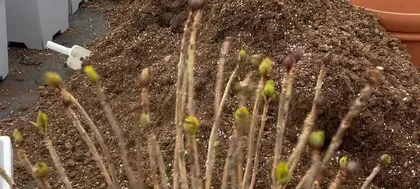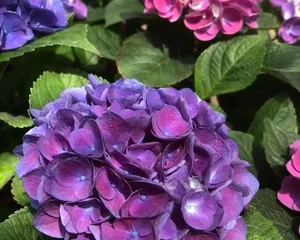Hydrangea is a beautiful flower that can be planted in a garden or grown in a pot at home. However, when growing it in a pot at home, we often make mistakes in choosing the pot and maintenance methods. This article will discuss whether hydrangeas are suitable for deep pots or shallow pots, and how to choose suitable soil and water to maintain the hydrangea.

I. Understanding the Growth Characteristics of Hydrangeas
Hydrangeas prefer a warm and humid environment, requiring plenty of sunlight and fertile soil. If choosing to pot them, it's important to understand their growth characteristics to provide them with the most suitable growing environment.
II. The Difference Between Deep Pots and Shallow Pots
Deep pots and shallow pots each have their own advantages and disadvantages. Deep pots can provide a thicker layer of soil and more nutrients, but water tends to accumulate; shallow pots, on the other hand, drain water quickly, but the soil layer is thin, leading to insufficient nutrient supply.

III. Why Hydrangeas Are Not Suitable for Pots That Are Too Deep
The roots of hydrangeas are relatively shallow. A pot that is too deep will cause the roots to not reach the soil, thus affecting growth and germination. The depth of the pot should not exceed the diameter of the root ball.
IV. Why a Shallow Pot Is Also Not the Best Choice
Although a shallow pot can help hydrangeas quickly drain excess water, it is not spacious enough and is not conducive to the development of the hydrangea's root system. Shallow pots are only suitable for short-term cultivation or seedling raising.
V. Choosing a Suitable Pot
Choosing a suitable pot is key. Generally, hydrangeas are suitable for growing in pots with a depth of 15-20 cm and a diameter slightly larger than the root ball.

VI. What Kind of Soil Is Suitable for Hydrangeas
Hydrangeas prefer fertile, well-draining soil. When growing them in pots at home, you should choose soil suitable for hydrangea growth and follow scientific maintenance methods.
VII. How to Provide the Right Amount of Water for Hydrangeas
Hydrangeas need the right amount of water to maintain their growth and germination. You should water the hydrangeas thoroughly every week and water again before the soil dries out.
VIII. How to Care for Hydrangeas in Summer
Summer is the busiest growing season for hydrangeas and requires special attention. You can mist the hydrangeas or place them on wet pebbles to increase the air humidity.
IX. How to Care for Hydrangeas in Autumn
Autumn is the dormant season for hydrangeas, so it's necessary to reduce watering frequency and maintain ventilation. Under suitable temperature and humidity conditions, hydrangeas may bloom.
X. How to Care for Hydrangeas in Winter
Winter is the slowest growing period for hydrangeas, so excessive watering is not needed. You should place the hydrangea in a sunny and warm location and protect it from cold winds on cold nights.
XI. How to Care for Hydrangeas in Spring
Spring is the season when hydrangea growth restarts, so it's necessary to increase fertilization and watering frequency. You should choose a fertilizer rich in potassium and keep the soil moist.
XII. How to Prevent Hydrangeas from Getting Sick
Hydrangeas are susceptible to diseases such as mold and powdery mildew. To prevent these diseases, you should ensure timely drainage and ventilation, and maintain hygiene and a good growing environment.
XIII. How to Prune Hydrangeas
After the hydrangeas have flowered, you can appropriately prune their branches and leaves to promote the growth of new ones. You should use sharp scissors and disinfect them before pruning.
XIV. How to Replace the Soil for Hydrangeas
The soil for hydrangeas can be replaced every year or every two years to maintain its fertility and drainage. You should choose soil that is rich in organic matter, loose, and breathable, and remove impurities from the old soil.
XV.
Hydrangea is a beautiful potted flower. Choosing a suitable pot and soil allows it to grow vigorously at home. We should follow scientific maintenance methods to provide hydrangeas with the best possible growing environment.